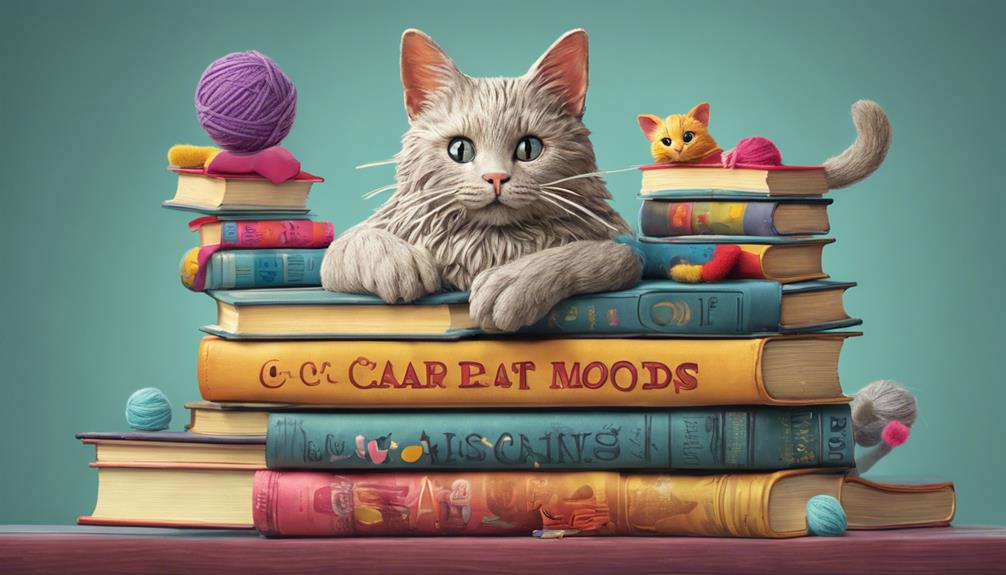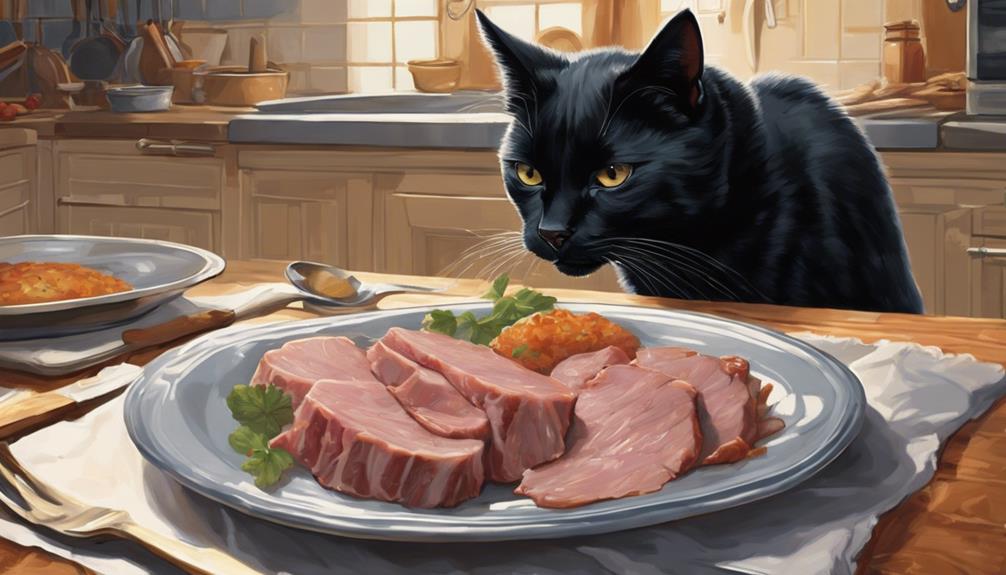In Viva Raw Cat Food, essential ingredients like Omega-3 fish oil are crucial for heart health, brain function, and a shiny coat. The zinc-rich oysters boost the immune system, enhance skin health, and help with energy production. Furthermore, the trace mineral egg yolk delivers necessary minerals for bone formation, metabolism, and overall vitality. These specially chosen components work together to ensure the optimal well-being and vitality of your feline friend. Delve deeper to learn more about the advantages that these ingredients bring to your beloved furball.
Key Takeaways
- Omega-3 fish oil for heart, brain health, shiny coat, and joint support.
- Zinc-rich oysters boost immune function, skin health, and energy production.
- Trace mineral egg yolk provides essential minerals for immunity, skin, and metabolism.
- Carefully sourced ingredients ensure quality and sustainability.
- Vitamin E in fish oil enhances benefits for a cat's health.
Omega-3 Fish Oil
Incorporating Omega-3 fish oil into Viva Raw cat food guarantees essential fatty acids like EPA and DHA are provided for peak heart and brain health. This crucial nutrient not only supports a shiny coat but also reduces inflammation and aids in joint health for your beloved feline companion.
The omega-3 fish oil used in Viva Raw cat food is carefully sourced from high-quality and sustainable sources, ensuring both purity and effectiveness. By including omega-3 fish oil in your cat's diet, you aren't only helping to maintain healthy skin and coat but also providing them with anti-inflammatory properties that promote overall well-being. Additionally, the presence of vitamin E in omega-3 fish oil further boosts its benefits for your cat's health.
Embracing this natural and crucial ingredient in Viva Raw cat food is a proactive step towards ensuring your cat's peak health and happiness.
Zinc-Rich Oysters

Zinc-rich oysters in Viva Raw cat food are a natural source essential for immune function and skin health in felines. Oysters provide a bioavailable source of zinc that supports various aspects of your cat's well-being. Here's why these zinc-rich oysters are so beneficial:
- Immune Function: Zinc from oysters plays an important role in supporting your cat's immune system, helping them fight off illnesses and stay healthy.
- Skin Health: The zinc in oysters contributes to maintaining a healthy skin and coat, keeping your cat looking and feeling their best.
- Metabolism Support: Oysters help in supporting your cat's metabolism, aiding in energy production and overall health.
- Enzyme Function: Zinc is necessary for enzyme function and DNA synthesis in cats, which are crucial processes for their overall health and well-being.
Including zinc-rich oysters in your cat's diet can help prevent zinc deficiency, promote enzyme function, and support their immune system and skin health.
Trace Mineral Egg Yolk
Egg yolks in Viva Raw cat food contribute essential trace minerals important for feline health, including zinc, selenium, and manganese. These minerals play significant roles in keeping our furry friends healthy and thriving.
Zinc, found abundantly in egg yolks, is a powerhouse for supporting immune function, maintaining skin health, and aiding in wound healing. Selenium, another key player in egg yolks, acts as a powerful antioxidant, safeguarding our cats' cells from damage and supporting their thyroid function.
Additionally, manganese present in egg yolks plays a critical role in bone formation, metabolism, and cartilage health, ensuring our feline companions stay active and agile. By including egg yolks in their diet, we provide our cats with a natural source of these essential trace minerals, promoting their overall well-being and vitality.
Frequently Asked Questions
What Ingredients Should You Stay Away From in Cat Food?
I avoid cat foods with artificial preservatives, excessive carbs, sugars, unidentified meat by-products, and artificial additives. These ingredients offer no nutritional value and can harm my health. Transparency in ingredients is crucial for my well-being.
Is Viva Raw Balanced?
Yes, Viva Raw cat food is balanced. It contains 80% muscle meat, 10% raw bone, and 10% secreting organs, along with natural supplements like fish oil, oysters, and egg yolk. Synthetic nutrients like taurine and manganese proteinate are also added.
Does Viva Raw Use Hpp?
No, Viva Raw doesn't use HPP in their cat food. They maintain freshness and nutrients by skipping this method. Safety is key with their quality control measures. Their raw food stays minimally processed for best nutrition.
What Are the Top 5 Healthiest Cat Foods?
I've found that the top 5 healthiest cat foods prioritize high-quality protein sources, like real meat, and avoid fillers and artificial additives. Brands like Hill's Science Diet, Royal Canin, Orijen, Taste of the Wild, and Blue Buffalo offer balanced nutrition for our feline friends.
What are the key ingredients in Viva Raw Cat Food that make it suitable for picky eaters?
Viva Raw Cat Food is formulated with high-quality, natural ingredients that cater to even the most finicky eaters. The reviews for Viva Raw Cat Food praise its use of real meat, essential nutrients, and absence of artificial additives. These features make it an ideal choice for picky felines.
Conclusion
To sum up, Viva Raw cat food stands out for its key ingredients:
Omega-3 fish oil for a healthy coat,
zinc-rich oysters for immune support, and
trace mineral egg yolk for overall health.
By incorporating these crucial elements into your cat's diet, you're making a healthy choice that will benefit their well-being in the long run.
Choose Viva Raw for a well-rounded and nutritious meal option for your feline friend.










